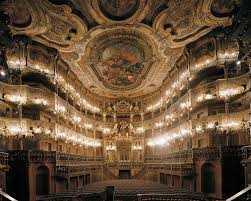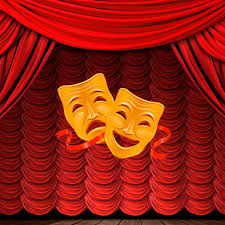Mini Sheet: 80th Anniversary of Dushanbe - Blue Overprinted (Tajikistan 2023)
80th Anniversary of Dushanbe - Blue Overprinted (Tajikistan 2023)
01 January (Tajikistan ) within release 80th Anniversary of Dushanbe - Overprinted (2023) goes into circulation Mini Sheet 80th Anniversary of Dushanbe - Blue Overprinted face value 20.80 Tajikistani somoni
| Mini Sheet 80th Anniversary of Dushanbe - Blue Overprinted in catalogues | |
|---|---|
| Yvert et Tellier: | Yt: TJ 840A-840F |
Mini Sheet is vertical format.
Also in the issue 80th Anniversary of Dushanbe - Overprinted (2023):
- Mini Sheet - 80th Anniversary of Dushanbe - Blue Overprinted face value 20.80;
- Mini Sheet - 80th Anniversary of Dushanbe - Red Overprinted face value 20.80;
- Stamp - Aini State Opera and Ballet Theatre - Blue Overprinted face value 0.20;
- Stamp - Aini State Opera and Ballet Theatre - Red Overprinted face value 0.20;
- Stamp - City Government Building - Blue Overprinted face value 0.20;
- Stamp - City Government Building - Red Overprinted face value 0.20;
- Stamp - Majlisy Oly-The Tajik Parliament - Blue Overprinted face value 0.20;
- Stamp - Majlisy Oly-The Tajik Parliament - Red Overprinted face value 0.20;
- Stamp - National Bank Building - Blue Overprinted face value 0.20;
- Stamp - National Bank Building - Red Overprinted face value 0.20;
- Stamp - New Residential Blocks - Blue Overprinted face value 10;
- Stamp - New Residential Blocks - Red Overprinted face value 10;
- Stamp - Presidential Palace - Blue Overprinted face value 10;
- Stamp - Presidential Palace - Red Overprinted face value 10;
Mini Sheet 80th Anniversary of Dushanbe - Blue Overprinted it reflects the thematic directions:
An anniversary is the date on which an event took place or an institution was founded in a previous year, and may also refer to the commemoration or celebration of that event. For example, the first event is the initial occurrence or, if planned, the inaugural of the event. One year later would be the first anniversary of that event. The word was first used for Catholic feasts to commemorate saints. Most countries celebrate national anniversaries, typically called national days. These could be the date of independence of the nation or the adoption of a new constitution or form of government. The important dates in a sitting monarch's reign may also be commemorated, an event often referred to as a "Jubilee".
Architecture (Latin architectura, from the Greek ἀρχιτέκτων arkhitekton "architect", from ἀρχι- "chief" and τέκτων "builder") is both the process and the product of planning, designing, and constructing buildings and other physical structures. Architectural works, in the material form of buildings, are often perceived as cultural symbols and as works of art. Historical civilizations are often identified with their surviving architectural achievements.
A bank is a financial institution that accepts deposits from the public and creates a demand deposit while simultaneously making loans.Lending activities can be directly performed by the bank or indirectly through capital markets
A building or edifice is a structure with a roof and walls standing more or less permanently in one place, such as a house or factory. Buildings come in a variety of sizes, shapes and functions, and have been adapted throughout history for a wide number of factors, from building materials available, to weather conditions, to land prices, ground conditions, specific uses and aesthetic reasons. Buildings serve several needs of society – primarily as shelter from weather, security, living space, privacy, to store belongings, and to comfortably live and work. A building as a shelter represents a physical division of the human habitat (a place of comfort and safety) and the outside (a place that at times may be harsh and harmful).
The City Halls are part of a market complex designed by John Carrick in 1882, but the grand hall itself was designed by George Murray and opened in 1841. It was the first hall suitable for large gatherings and concerts to be built in the City and played host to the likes of Benjamin Disraeli, Charles Dickens, Hungarian patriot Lajos Kossuth and William Ewart Gladstone. From its early days it hosted a wide variety of popular and classical concerts including those by touring groups such as Louis-Antoine Jullien's celebrated London-based orchestra and Charles Halle's orchestra from Manchester. Glasgow's first regular orchestral subscription concert series, played by an orchestra managed by the Glasgow Choral Union, was given in the grand hall from 1874 until the opening of the much larger St Andrew's Hall in 1877. Arthur Sullivan was its conductor for two seasons from 1875 to 1877. The Old Fruitmarket directly adjoins the grand hall and was a functioning market until the 1970s after which it was in occasional use for jazz and folk music events. The adjoining buildings were home to bustling produce markets such as the fresh fruit and flower market and the cheese market.
An opera house is a theater building used for performances of opera. Like many theaters, it usually includes a stage, an orchestra pit, audience seating, backstage facilities for costumes and building sets, as well as offices for the institution's administration.
Theatre or theater is a collaborative form of performing art that uses live performers, usually actors or actresses, to present the experience of a real or imagined event before a live audience in a specific place, often a stage. The performers may communicate this experience to the audience through combinations of gesture, speech, song, music, and dance. It is the oldest form of drama, though live theatre has now been joined by modern recorded forms. Elements of art, such as painted scenery and stagecraft such as lighting are used to enhance the physicality, presence and immediacy of the experience. Places, normally buildings, where performances regularly take place are also called "theatres" (or "theaters"), as derived from the Ancient Greek θέατρον (théatron, "a place for viewing"), itself from θεάομαι (theáomai, "to see", "to watch", "to observe").







